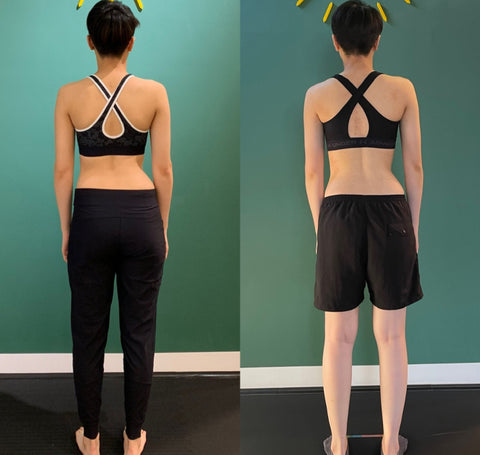What is the Practice of Chiropractics?

Chiropractic care, often associated with terms like 'neck adjustment', 'spine alignment', and 'body adjustments', is a form of alternative medicine focused on diagnosing and treating mechanical disorders of the musculoskeletal system, especially the spine. A chiropractor's role involves more than just adjusting the spine; it includes a non-traditional approach to patient health, emphasizing the body's innate ability to heal itself under the right conditions. Most patients are prescribed a Chiropractor based on the Medical Doctor's recommendations, but that does not mean it is the right approach. Often a chiropractor is there to facilitate symptoms and not address the system itself of a body and its asymmetries. In this article, we will address the alternatives to chiropractors, enduring pain even after an adjustment, addressing the root causes, how an adjustment affects long-term health, and the Functional Patterns approach to correcting these issues, and answer the question does chiropractics help heal the body long term?
The Alternative: Functional Patterns Approach

Functional Patterns (FP) offers an innovative approach to physical well-being, diverging from traditional chiropractic practices. FP emphasizes movement optimization, refining human movements to mirror better movers, such as Usain Bolt, Barry Sanders, and many other optimal athletes. This method addresses structures of the human body, aiming to correct inefficiencies at its core, offering a more sustainable solution to pain and physical limitations. FP approaches the body in systems and no symptoms approach, as Chiropractors do. What makes the difference so significant here, by approaching it that way, the body has time to adjust the spine without inducing the trauma of an adjustment or manual treatments.
Here are a few articles that help explain more about how Functional patterns approach the body.
Beyond the Trend: Discover the Difference between Functional Fitness and Functional Patterns
Why Am I Still in Pain After Continuous Adjustments?
Despite the widespread use of chiropractic adjustments, some patients, especially those seeking chiropractic for neck pain or relief from back issues, continue to experience pain. This may raise questions about the effectiveness and frequency of such treatments. It's essential to understand that while adjustments, including lower back adjustment, can provide relief, they are not a universal solution. The frequency of visits should be tailored to individual needs, and relying solely on adjustments without addressing underlying lifestyle or biomechanical issues does not yield long-term benefits.

Why is that so? FP provides an approach that teaches people to look at the body as a system and not its symptoms. A system approach allows the person addressing their problems to see the body as one interconnected system, not as individual pieces. When this approach is done, the body can move efficiently and effectively, not creating asymmetries in the body. At the core of the movement, is animal-like behavior, a Dog does not run like a human, as a human does not run on all fours like a dog. What must be addressed is moving as humans as intended, which is fundamentally what Functional Patterns try to do.
Addressing Root Causes
Continual chiropractic adjustments, while providing temporary relief, may not address the underlying causes of pain. FP provides a more holistic solution by enhancing biomechanical efficiency, leading to more lasting relief. This approach moves beyond symptomatic treatment, focusing on sustainable, biomechanically sound movement patterns. FP's emphasis on the 'Big 4' movements aligns closely with human biological functions, offering more effective long-term benefits.
How Does an Adjustment Affect My Long-term Health?
Chiropractic adjustments, including neck adjustment and spine alignment, may have varied effects on long-term health. While many experience improved mobility and pain relief, potential side effects, such as temporary discomfort or fatigue, are also noted. The impact of chiropractic care, particularly treating conditions such as scoliosis- varies greatly among individuals, necessitating a comprehensive approach that includes lifestyle, diet, and exercise.
Moreover, getting temporary relief is an instinct to many, but it still neglects to address the root problem with the spine. Functional Patterns approach posture as a system to address misaligned spines and pain, by correcting a person's posture. Chiropractors, like many other medical practices, may create temporary solutions, that can have a person coming back for more. FP encourages clients to address the root problem and enables a person to fix their body long-term.
The Functional Patterns Perspective on Long-term Health

At Functional Patterns we advocate for an approach focused on immediate relief and the long-term well-being of the entire body. By prioritizing efficiency and natural movement, FP reduces the likelihood of future injuries and chronic pain. This method improves overall body functionality, not just treating specific symptoms, offering a more comprehensive solution for long-term health. As mentioned in a previous article here.
Conclusion
In conclusion, while chiropractic care has its clout or notoriety in the medical community, this does not mean it is effective overall in addressing a person's spinal asymmetries, the Functional Patterns approach offers a different, potentially more beneficial perspective in the long run. By focusing on biomechanical efficiency and natural human movement patterns, FP presents an alternative that aligns with our evolutionary design, potentially offering more sustainable solutions to physical pain and limitations.







